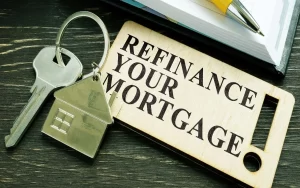Can You Qualify For a Subprime Mortgage?
2 min read
You may have heard of subprime mortgages if you have ever bought a home. They are mortgages with high interest rates and borrowers with sketchy credit ratings. These mortgages went out of business after the housing bubble burst, and were replaced by nonprime loans. The mortgage crisis caused many mortgage lenders to loosen their standards for loan approval. Many lenders did not require proof of income or credit history. As a result, many borrowers defaulted on their loans, and foreclosures increased. Banks were hit hard, and some of them were even bailed out by the government, while others were sold off or merged through failure.
A subprime mortgage is not necessarily a bad thing, and it is still possible to qualify for one. The process is similar to that of a conventional mortgage. The mortgage issuer evaluates the borrower’s income, assets, savings, and credit. They then issue a loan at a specified interest rate and fees. Borrowers must repay their loan in monthly installments over a specified period of time. If the borrower does not make the payments, the issuer may foreclose and sell the house to recoup their losses.
Generally, borrowers with subprime mortgage rates should wait until they have enough cash to pay off high-interest credit card debt, and focus on paying their bills on time. If you are already underwater in credit card debt, you may want to consider an interest-only mortgage. However, these loans require higher payments after the initial period. If you do qualify, the Dodd-Frank financial reform laws may help you get a subprime mortgage with lower interest rates.
The subprime mortgage crisis began when mortgage lenders began offering higher-risk loans to borrowers. These mortgages were sold to investors as mortgage-backed securities. Lenders marketed these mortgages to investors as investment products and tried to profit from them. They also sold the mortgage-backed securities to investors to absorb losses. But these mortgages were not able to survive at these higher rates, and borrowers were forced to forfeit their homes to the banks.
Another option is a fixed-rate subprime mortgage. This mortgage will lock the interest rate for the entire term of the loan, which is often forty to fifty years. Unlike a fixed-rate mortgage, these mortgages often reset at regular intervals and can be difficult to budget for. However, if the interest rate resets, the payments may become unaffordable and delinquent. In such cases, a subprime mortgage can be beneficial for homebuyers who want to purchase a house.
As a result of the subprime mortgage crisis, a slew of new regulations have been implemented. The Consumer Financial Protection Bureau is responsible for overseeing these new mortgages. Unlike traditional mortgages, these newer versions must undergo a stricter regulatory environment. Lenders are also required to conduct homebuyer counseling. The Consumer Financial Protection Bureau has created a subprime mortgage guidance manual. With these new rules, lenders will need to follow the guidelines outlined in the Dodd-Frank Wall Street Reform and Consumer Protection Act.








